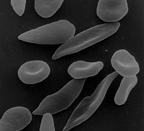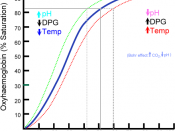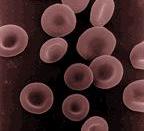Blood plasma is the fluid part of blood that contains nutrients, glucose, proteins, minerals, enzymes, waste products, antibodies, clotting proteins and hormones. Its role is transporting the substances around the body. Plasma contains 90% water and only 10 the solutes.
Erythrocytes (also called red blood cells) are biconcave disks, containing haemoglobin that transports oxygen. They transport the oxygen to cells all over the body. The surface area to volume ratio is very large on the erythrocytes so
oxygen can diffuse very quickly into the cell. They lack organelles meaning that there is more room for haemoglobin. They are small and have a flexible membrane which allows them to fit through tiny capillaries and transport oxygen extremely close to cells.
Leucocytes (also called white blood cells) have a nucleus, are much larger than red blood cells and are spherical or irregular in shape. There are two main types of leucocytes called granulocytes (they have granular cytoplasm and lobed nuclei) and agranulocytes (the cytoplasm appears smooth and the nucleus is rounded or horseshoe in shape).
Agranulocytes consist of monocytes (phagocytic against foreign cells) and lymphocytes which produce antibodies. Granulocytes consist of neutrophils (phagocytic and contain lysosomes), eosinophils (phagocytic against allergens) and basophils which makes heparin to prevent unnecessary blood clots and serotonin to allow phagocytes to leave the blood and enter the site of infection.
The different cells are shown below:
Oxygen combines with haemoglobin in red blood cells to form oxyhaemoglobin. Haemoglobin is a protein and is made up of 4 polypeptide chains, each with a haem group. Each haem group can pick up 1 molecule of O2. The protein, being fairly small, could pass out of the blood during ultrafiltration in the kidneys so, to ensure that it is not lost, it is found within red blood cells.
The relationship...


